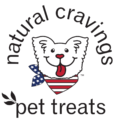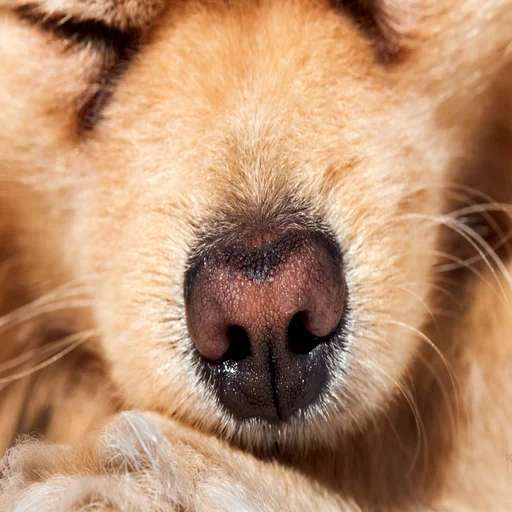The saying says, “that true happiness starts with a wet nose and ends with a wagging tail.” And that is true, dogs bring pure joy to our daily lives. But have you as a dog owner and best buddy, thought to yourself, “Why is my dog’s nose always wet?”
If you have wondered about this, don’t worry because you’re not alone! In this article, we will talk more on the why and learn all one needs to know about the mysterious dog nose.
The Anatomy of a Dog’s Nose
Humans can smell beautiful fresh flowers they pick on a long walk. Or detect the fragrance of a neighboring kitchen wafting by the open window. But a dog’s nose can detect scents way better than us, from way farther away.
They are amazing creatures and their noses (as adorable as they are) are literally built for sniffing success too. And here’s why:
Structure and Features of the Canine Nose
The nose knows and a dog’s nose is constructed in such a way that makes them the best sniffers! A canine has a dual-holed nostril (or two nares) divided by cartilage and a septum constructed of bone. The rhinarium or tip of the snout is the part that is often moist and cool to the touch. When your dog flares their nostrils to smell and investigate the area, the specific shape of its nasal openings changes to redirect the air.
The specific structure of their nose allows air passing through to redirect from the upper part of the nose into the olfactory area. A small slit at the sides of the nostrils is utilized in the expiration of breath when they sniff. But what is olfactory and what does that even mean?
Olfactory Superpowers: The Importance of Smell for Dogs
Olfactory or smell receptors allow for a sense of smell. Involved are proteins capable of binding with odor molecules that play a huge role in how and what we smell. To put into perspective, dogs can have up to 300 million olfactory receptors in their nasal system, while humans have 10x less than that.
The longer-shaped snout of a dog contains a maze of thin bones, referred to as turbinates, which are all sat next to an epithelium. There’s even a set of intricate bones smaller than those. But, What do they all do?
Well, simply put, they help create a larger surface area for air to pass over with each breath.
Once the small hairs and tiny receptors start to recognize odors, they then signal a tunnel of small nerves to send messages to the brain. Once the brain is alerted, the olfactory lobe then attempts to interpret those messages.
Unlike humans, however, canines have a specific basal plate bone, called the Lamina Transversa. This acts like a shelf or tunnel separate from your dog’s respiratory system. Allowing scents to build up and be kept there for analysis even as air is being exhaled.
Another amazing tool in a dog’s smelling game located behind the upper incisors is called Jacobsens’ organ. This organ is located in the nasal cavity of a canine that opens into the roof of their mouths. This serves as a secondary olfactory system and is designed specifically to efficiently sniff things out.
Did you know? Dog noses work best when they are moist because scent particles stick much better to damp surfaces.

Why Dog’s Noses Are Wet
For a dog, keeping a moist nose is key. Moisture helps a canine’s sense of smell, that is why you might even see them lick their noses from time to time if it becomes dry.
Benefits of Moisture: Smell Enhancement, Trapping Particles, and Cooling Off
A moist nose enhances your dog’s ability to discern scents and communicate through smell. Tiny particles in the air will land near and on your dog, if they adhere to their wet snout, it will make it that much easier for the dog to identify odors.
Secondly, a dog might keep their nose a little wet when they feel it is dried out or they want to cool down.
Health and Hygiene Of Wet Noses
A dry nose might be a sign to go to the vet for a quick check-up but it doesn’t necessarily mean something negative. In fact, some dogs have frequent dry noses, others are more wet, and mucusy. Let’s discuss more about dry noses, healthy dog noses, and a dog’s overall signs of well-being.
Why is my Dog’s Nose Dry?
Here are just a few of the many reasons a dog can have a drier nose:
- Early in the morning after they wake up
- Age reasons (older dogs)
- Dehydration
- Dry, Warm Climates
- Breeds with nasal problems
- Germ-related illnesses
Understanding Nasal Discharge: Differentiating Normal vs. Abnormal
All noses normally secrete mucus. The inner lining of a canine nose contains special glands that produce moisture so that the nose is naturally wet. These glands also act as part of a dog’s natural cooling system.
When dogs are exercising or hard at work, they are utilizing their keen sense of smell. They tend to keep their noses more wet and get wet from searching the environment around them. So wet noses help dogs smell and explore the world around them!
Clear nasal discharge with no odor is perfectly normal for a pup. However, if you see that there is an overflowing amount of mucus or that the mucus has become thick and changed color. Or if there is a bloody discharge. Call your pet health professional and get them checked for possible infections. nasal blockages, parasites, or possible diseases.
Investigating the Myths Of Wet Dog Noses
Have you ever heard that a dog with a dry nose is sick or that something is wrong with them? Well, that’s not quite true.
Dispelling the Old Wives’ Tales: Is a Dry Nose Always a Bad Sign?
Myth number one is the belief that your dog’s nose is always trying to tell you something. Whether it’s dry, too wet, too cold, warm, or somewhere in between, veterinarians would probably tell you not to worry about it too much.
The second myth busted! A wet nose is normal, but a dry one isn’t necessarily abnormal. The temperature and moisture level of a dog’s nose is not a good indicator of their health. When in doubt, you can talk to their doctor so you can put your mind at ease.
Keeping Your Dog’s Nose Healthy and Moist
If you want your pup to have the wettest nose on the block make sure they get regular veterinary check-ups. Keep up on a proper nutritional diet and make sure they stay hydrated, energized, and active.
Conclusion
The wetness of a dog’s nose is a fascinating and essential aspect of its anatomy. While many myths and misconceptions surround this phenomenon, scientific evidence sheds light on the reasons behind their moist noses.
The constant production of mucus serves multiple purposes, from enhancing their extraordinary sense of smell to trapping particles and aiding in temperature regulation. Additionally, a wet nose plays a crucial role in their communication with both humans and other animals.
Understanding and caring for our furry companions’ noses not only deepens our bond with them but also helps ensure their overall health and happiness.
So, the next time you feel that cold, wet nose nuzzling against your hand, take a moment to appreciate the remarkable science behind this unique feature that makes dogs truly extraordinary creatures.

